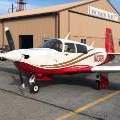Best Power vs Best Economy
-
Members Online
- takair
- Marc_B
- Ned Gravel
- dzeleski
- Meshach
- cliffy
- Teddyhherrera
- FoxMike
- boboxa9895
- BeachLifeMoon
- Oklahoma Mooney
- varlajo
- mluvara
- toto
- DXB
- sdmideas
- IvanP
- Cody Stallings
- hammdo
- Rocket_Driver
- CCAS
- Marvin
- 47U
- 1967 427
- DanM20C
- Nico1
- GTO1969
- gabez
- Hank
- Niko182
- billy hellcat
- donkaye
- Dammit Bill
- redbaron1982
- wombat
- Roseusaf
- Ragsf15e
- Alan Fox
- Max Clark
- Lax291
- markazzarito
- rwabdu
- Kelpro999
- Alan Maurer
- Joshua Blackh4t
- shawnd
- N201MKTurbo


Recommended Posts
Join the conversation
You can post now and register later. If you have an account, sign in now to post with your account.